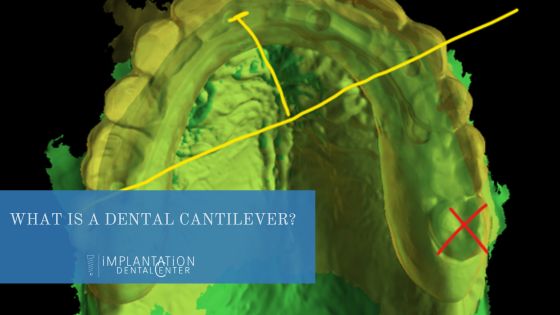A cantilever on a dental prosthesis is an extension of the prosthesis that is unsupported at one end. In other words, it is a part of the prosthesis that extends beyond the last tooth or implant that provides support.
Cantilevers are commonly used in dental prostheses to replace missing teeth, especially in situations where there are no teeth adjacent to the gap to which the prosthesis can be anchored. For example, in a situation where a patient has lost a tooth at the back of their mouth and there are no teeth behind it to which a bridge can be attached, a cantilevered bridge may be used.
Cantilevers can also be used in implant-supported dental prostheses, where an implant is used to replace a missing tooth or teeth. In this case, the implant(s) provide support for the prosthesis, and the cantilevered portion of the prosthesis extends beyond the last implant.
It is important to note that cantilevers should be used judiciously, as they can place additional stress on the supporting teeth or implants, which can lead to complications over time.
How much can a cantilever extend an implant prosthesis?
The amount of cantilever that can be safely used in an implant-supported prosthesis depends on various factors, including the location of the implant(s), the quality and quantity of the remaining bone, and the occlusal forces generated during normal function.
In general, a cantilever of up to 1.5 times the antero-posterior distance of implants can be used safely in most cases. However, the exact amount of cantilever that can be used may vary depending on the specific clinical situation and the judgment of the prosthodontist.
It is important to note that using excessive cantilever can lead to complications such as implant failure, implant fracture, or damage to the surrounding bone and soft tissues. Therefore, the use of cantilevers should be carefully planned and executed by a trained and experienced dental professional.
A cantilever that is too long in the posterior region can lead to excessive stress on the implant and surrounding bone, which can cause complications over time.
The specific amount of cantilever that can be used will depend on various factors, including the position of the implants, the quality and quantity of the remaining bone, and the forces generated during normal function. Therefore, the use of cantilevers should be carefully planned and executed by a trained and experienced dental, such as Dr. Hervas.
Would the all-on-4 reduce this cantilever?
Yes, the All-on-4 technique can help to reduce the amount of cantilever that is required in an implant-supported prosthesis.
In the All-on-4 technique, four implants are placed in strategic positions in the jawbone to support a full arch of teeth. The two posterior implants are angled to maximize support and stability, which reduces the need for cantilevers to replace the posterior teeth. This allows for a more balanced distribution of forces across the implants, which can minimize the stress on the supporting bone and reduce the risk of implant failure or other complications.
By reducing the need for cantilevers, the All-on-4 technique can help to improve the long-term success and stability of the implant-supported prosthesis. However, it is important to note that the exact amount of cantilever that can be used still depends on various factors, including the specific clinical situation and the judgment of the your prosthodontist.
For further questions, we invite you to schedule a consultation with Implantation Dental Center. Dr. Mauricio Hervas is a double board certified prosthodontist, and can provide information specific to your dental case. Contact us today to learn more.



